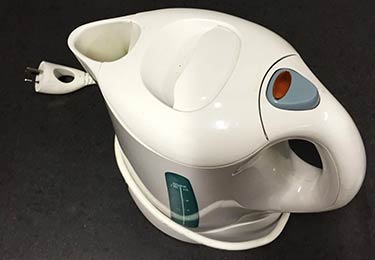Image source: QCAA
This sample assessment is based on previous versions of the Australian Curriculum.
Electric kettles
Description
Electric appliances containing heating elements are common in students' daily lives. Heating elements change electrical energy into heat energy and an understanding of electrical energy, power and Ohm's law can be used to explain how heating elements work. Heating elements are made of metals with high resistance, such as nichrome wire, and the size of the wire affects the amount of electrical energy flowing in the wire and therefore the heat energy produced.
The practical investigation of this topic and communication of findings provide opportunities for students to develop skills used by the scientific community. They will:
- use the particle model and the relationships between energy, power, voltage, current and resistance to demonstrate your understanding of energy transfer in electric circuits
- investigate some of the factors that affect energy transfer in electric circuits
- plan an investigation to check the power rating of an electric kettle.
Written: Supervised assessment and experimental investigation
Contents:
- Teacher guidelines
- Student booklet
- Task-specific standards: Continua
- Task-specific standards: Matrix
- Model response
- Assessment resource: Explaining resistance in terms of the particle model
- Assessment resource: Scientific inquiry process
Download the full assessment (contains the documents as Word files):
Model student response


